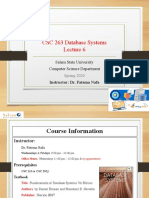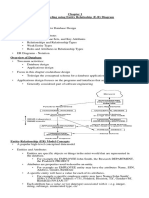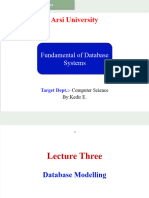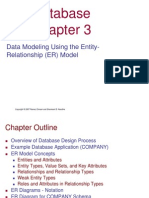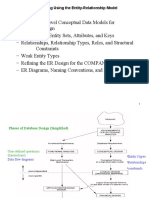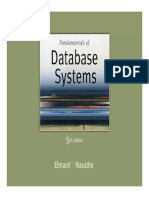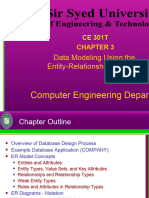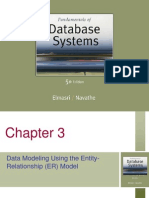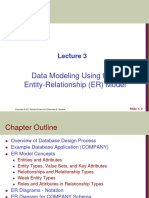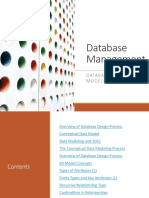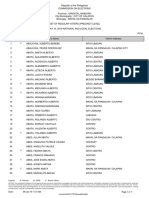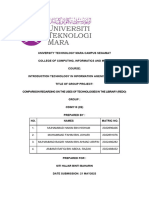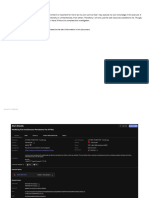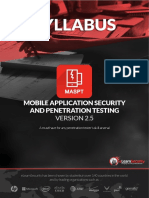0% found this document useful (0 votes)
54 views47 pagesUnit 1 Data Modeling Using Entity
1. The example database tracks information about a company organized into departments and projects.
2. Entities include employees, departments, projects, and locations. Attributes include names, numbers, dates, addresses, salaries, and assignments between entities.
3. Relationships exist between departments and employees, departments and projects, and employees and projects.
Uploaded by
prathameshm.cs21Copyright
© © All Rights Reserved
We take content rights seriously. If you suspect this is your content, claim it here.
Available Formats
Download as PDF, TXT or read online on Scribd
0% found this document useful (0 votes)
54 views47 pagesUnit 1 Data Modeling Using Entity
1. The example database tracks information about a company organized into departments and projects.
2. Entities include employees, departments, projects, and locations. Attributes include names, numbers, dates, addresses, salaries, and assignments between entities.
3. Relationships exist between departments and employees, departments and projects, and employees and projects.
Uploaded by
prathameshm.cs21Copyright
© © All Rights Reserved
We take content rights seriously. If you suspect this is your content, claim it here.
Available Formats
Download as PDF, TXT or read online on Scribd
/ 47

